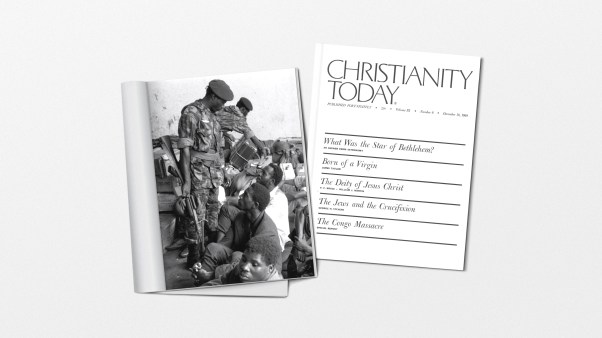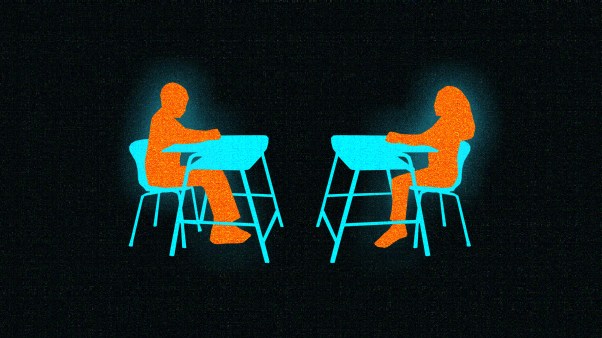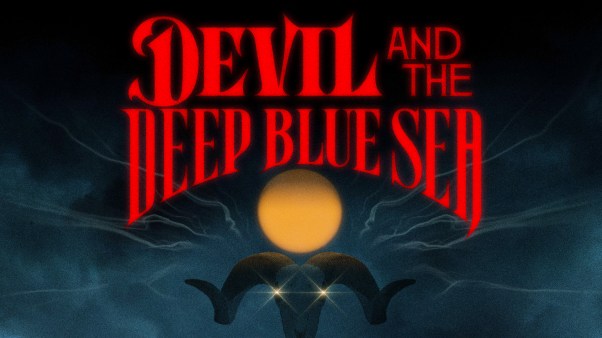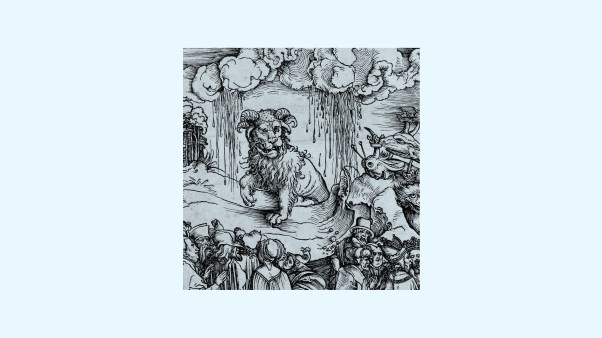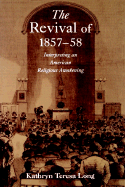 The farm labor history of California has often been told through the plight of agricultural laborers during the Depression era and the efforts, beginning in the early 1960s, of the United Farm Workers to improve working conditions of Mexicans in the fields.
The farm labor history of California has often been told through the plight of agricultural laborers during the Depression era and the efforts, beginning in the early 1960s, of the United Farm Workers to improve working conditions of Mexicans in the fields.But to Lloyd Barba, a professor of religion at Amherst College, this history isn’t complete without factoring in religion, particularly the stories of California’s Mexican farmworkers who embraced Pentecostalism, a Christian movement generally seen at the time as a “distasteful new sect” with “cultish and fanatical tendencies.”
“I think about how often Latino history is told as labor history, and that makes sense … but where are the laborers going?” Barba said. “If we’re going to get a more balanced and accurate Latino history, we have to look at Latino religious life.”
In his recently released book, Sowing the Sacred: Mexican Pentecostal Farmworkers in California, Barba writes about the Mexican and Mexican American Pentecostal agricultural workers who built houses of worship in the state’s agricultural towns, who turned to “divine healing” for injuries they sustained working in the fields and whose worship style inspired civil rights leader Cesar Chavez to incorporate music and singing in his union organizing.
Barba also writes about the role of women in these church spaces “who were the foundation of the church,” despite not given ministerial credentials to become preachers. They raised money for the building of churches by selling food and made the worship spaces look holy through their handmade goods, such as doilies and fabric embroidered with biblical phrases, Barba said.
“To do a material history of this Mexican Pentecostal movement is to do women’s history,” Barba told Religion News Service.
The book traces the development of Pentecostalism among migrant laborers between 1916 and 1966, before the heyday of the National Farm Workers Association, which later became the United Farm Workers. Barba felt it important to “describe a moment where the exploitation of Mexican workers is at its worst.”
Barba, in his book, recounts how “divine healing” was seen as a pragmatic way to care for impoverished workers who lacked regular access to medical care. For laborers working in tough conditions, it was about “hard work and fervent worship … work by day and worship by night,” Barba said.
“People are getting hurt. People are contracting tuberculosis. People are seeking out healing when there’s not a health care system in place to provide those kinds of services,” Barba said. “Whether we’re talking physical healing, or what we now refer to as mental health and counseling, these are spaces that offered respite in an otherwise punishing world.”
Worship services “would call for people who were sick to come up and to be healed,” Barba said. There was a “spectacle” side to it, he added, “in that it was a very public kind of ritual.”
In the book, Barba cites a flier distributed by La Iglesia Apostólica Cristiania del Pentecostés that invited residents in the Imperial County city of Calexico to revival services held “under the direction of the Holy Spirit.” These services were outdoor and presided by a Mexican orator and pastor who lived in Los Angeles. “All are invited. Bring your sick and God will bless them,” the flier declared.
Barba writes about the “sonic elements of services,” which included “collective singing, exuberant worshipping, guitar playing, percussive striking, hand clapping, and shouting ‘aleluya.’”
The “vibrancy” of this sacred music inspired Chavez to later incorporate it into his organizational tactics. Barba wrote of the working relationship between Chavez—who at the time served with the Community Service Organization—and Mariano Marín—a Pentecostal preacher and pastor—who led his immigrant congregation in the midst of Operation Wetback, which resulted in a mass deportation of Mexican nationals.
Through this partnership, Chavez witnessed Marín leading worship services out of a house in the San Joaquin Valley town of Madera and noticed a contrast between “the sonic and material world of Pentecostal and Catholic music,” Barba wrote.
Chavez recalled in his 1975 autobiography visiting a little church in Madera of a dozen men and women, describing “more spirit there than when I went to mass where there were two hundred.
“These people were really committed in their beliefs and this made them sing and clap and participate. I liked that,” he wrote. “I think that’s where I got the idea of singing at the meetings. That was one of the first things we did when I started the Union. And it was hard for me because I couldn’t carry a tune.”
For Barba, who hails from Stockton in the Central Valley, it’s noteworthy that this religious movement grew in rural agricultural areas.
He sees the influence of those early immigrant houses of worship today in the Spanish-language church signs across California’s Central Valley. A church that used to be “First Baptist Church” in many cities in the Central Valley may now be “Iglesia Bautista,” Barba said, adding that he also knows of church services in Mixtec among Indigenous Mexicans arriving in the area.
“Because of a large—first Mexican but more so now Central American—influx into the agricultural fields in California, you can note a very visible transformation of the religious demography,” Barba said.
Could God work something wonderful out of the relentlessly negative news? Leave it to evangelicals to find the silver lining amid economic crisis. If revival begins with recognizing our need for God, then perhaps the declining economy will wean Americans from their self-reliance. You would expect no other perspective from people who believe in the redemptive power of suffering.
If you’re not familiar with what renowned Harvard historian Perry Miller termed the “event of the century,” now is the time. We’re talking about the 19th century, but we’re not talking about the Civil War. We’re talking about the nationwide revivals of 1857 and 1858. Kathryn Long of Wheaton College notes that historians have largely ignored these revivals, caught between the Second Great Awakening before 1835 and the Civil War, which broke out in 1861.
Early recollections of the revival traced its origins to a lunch-hour prayer meeting held at North Dutch Church in Manhattan, just a five-minute walk from Wall Street. Former businessman turned missionary Jeremiah Calvin Lanphier hosted the sparsely attended first meeting on September 23, 1857. Yet week by week the gathering grew, spawning copycat prayer meetings around New York City. Within six months, businessmen across the country met during their lunch hours to pray that God would work among them in a special way.
What led these businessmen to devote their lunch hours to prayer? Long describes the buildup to the Panic of 1857. “A financial crisis had been brewing through the boom years of the 1850s, a period when Americans had indulged in a ‘national predilection for speculations of all sorts,’ including get-rich-quick schemes involving commodities, securities, mortgages, and above all, land speculation,” Long writes in Revival of 1857-58, published by Oxford in 1998. Ohio Life Insurance and Trust Company’s New York branch collapsed in August. When banks began demand payment on outstanding loans, panic spread. “Money became tighter, distrust spread, financial uncertainty grew throughout September, and rural banks and city businesses began to fail.” While the U.S. economy had suffered other downturns, the Panic of 1857 devastated American families of every class in every state.
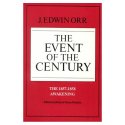 The farm labor history of California has often been told through the plight of agricultural laborers during the Depression era and the efforts, beginning in the early 1960s, of the United Farm Workers to improve working conditions of Mexicans in the fields.
The farm labor history of California has often been told through the plight of agricultural laborers during the Depression era and the efforts, beginning in the early 1960s, of the United Farm Workers to improve working conditions of Mexicans in the fields.But to Lloyd Barba, a professor of religion at Amherst College, this history isn’t complete without factoring in religion, particularly the stories of California’s Mexican farmworkers who embraced Pentecostalism, a Christian movement generally seen at the time as a “distasteful new sect” with “cultish and fanatical tendencies.”
“I think about how often Latino history is told as labor history, and that makes sense … but where are the laborers going?” Barba said. “If we’re going to get a more balanced and accurate Latino history, we have to look at Latino religious life.”
In his recently released book, Sowing the Sacred: Mexican Pentecostal Farmworkers in California, Barba writes about the Mexican and Mexican American Pentecostal agricultural workers who built houses of worship in the state’s agricultural towns, who turned to “divine healing” for injuries they sustained working in the fields and whose worship style inspired civil rights leader Cesar Chavez to incorporate music and singing in his union organizing.
Barba also writes about the role of women in these church spaces “who were the foundation of the church,” despite not given ministerial credentials to become preachers. They raised money for the building of churches by selling food and made the worship spaces look holy through their handmade goods, such as doilies and fabric embroidered with biblical phrases, Barba said.
“To do a material history of this Mexican Pentecostal movement is to do women’s history,” Barba told Religion News Service.
The book traces the development of Pentecostalism among migrant laborers between 1916 and 1966, before the heyday of the National Farm Workers Association, which later became the United Farm Workers. Barba felt it important to “describe a moment where the exploitation of Mexican workers is at its worst.”
Barba, in his book, recounts how “divine healing” was seen as a pragmatic way to care for impoverished workers who lacked regular access to medical care. For laborers working in tough conditions, it was about “hard work and fervent worship … work by day and worship by night,” Barba said.
“People are getting hurt. People are contracting tuberculosis. People are seeking out healing when there’s not a health care system in place to provide those kinds of services,” Barba said. “Whether we’re talking physical healing, or what we now refer to as mental health and counseling, these are spaces that offered respite in an otherwise punishing world.”
Worship services “would call for people who were sick to come up and to be healed,” Barba said. There was a “spectacle” side to it, he added, “in that it was a very public kind of ritual.”
In the book, Barba cites a flier distributed by La Iglesia Apostólica Cristiania del Pentecostés that invited residents in the Imperial County city of Calexico to revival services held “under the direction of the Holy Spirit.” These services were outdoor and presided by a Mexican orator and pastor who lived in Los Angeles. “All are invited. Bring your sick and God will bless them,” the flier declared.
Barba writes about the “sonic elements of services,” which included “collective singing, exuberant worshipping, guitar playing, percussive striking, hand clapping, and shouting ‘aleluya.’”
The “vibrancy” of this sacred music inspired Chavez to later incorporate it into his organizational tactics. Barba wrote of the working relationship between Chavez—who at the time served with the Community Service Organization—and Mariano Marín—a Pentecostal preacher and pastor—who led his immigrant congregation in the midst of Operation Wetback, which resulted in a mass deportation of Mexican nationals.
Through this partnership, Chavez witnessed Marín leading worship services out of a house in the San Joaquin Valley town of Madera and noticed a contrast between “the sonic and material world of Pentecostal and Catholic music,” Barba wrote.
Chavez recalled in his 1975 autobiography visiting a little church in Madera of a dozen men and women, describing “more spirit there than when I went to mass where there were two hundred.
“These people were really committed in their beliefs and this made them sing and clap and participate. I liked that,” he wrote. “I think that’s where I got the idea of singing at the meetings. That was one of the first things we did when I started the Union. And it was hard for me because I couldn’t carry a tune.”
For Barba, who hails from Stockton in the Central Valley, it’s noteworthy that this religious movement grew in rural agricultural areas.
He sees the influence of those early immigrant houses of worship today in the Spanish-language church signs across California’s Central Valley. A church that used to be “First Baptist Church” in many cities in the Central Valley may now be “Iglesia Bautista,” Barba said, adding that he also knows of church services in Mixtec among Indigenous Mexicans arriving in the area.
“Because of a large—first Mexican but more so now Central American—influx into the agricultural fields in California, you can note a very visible transformation of the religious demography,” Barba said.
It would be a mistake, however, to attribute the revival to economic circumstances alone. J. Edwin Orr makes this point clear in his indispensable book on the revival. In his chapter “Prayer, Spontaneous and Concerted,” Orr writes, “Without a hint of panic or hysteria, there was a quiet, widespread, steady spirit of prayer throughout the country, quite apart from the noontime gatherings in the premises of the Dutch Reformed Church in Fulton Street.” Yet as Long notes, the prayer meetings sought the conversion of drunkards and prostitutes with less regard for slavery and the looming threat of war. Before war erupted, the revival had faded.
Yet the remarkable events of 1857 and 1858 left behind a lasting legacy. Evangelist D.L. Moody, who turned 21 in 1858, longed to relive the events of his youth. “Moody’s later evangelistic ‘innovations’ were in large part systematic recreations of techniques from the prewar spiritual awakening, refined through years of practice with the YMCA,” Long writes. Denominations welcomed thousands of new members. Participants evangelized soldiers on both sides of the Civil War. Sunday schools blossomed. Anna Warner wrote a new song for these children that would last longer than memory of the revivals.
“Jesus loves me, this I know;
For the Bible tells me so:
Little ones to Him belong;
They are weak, but He is strong.”
Though written for children, the message sustains Christians of any age during any crisis.


